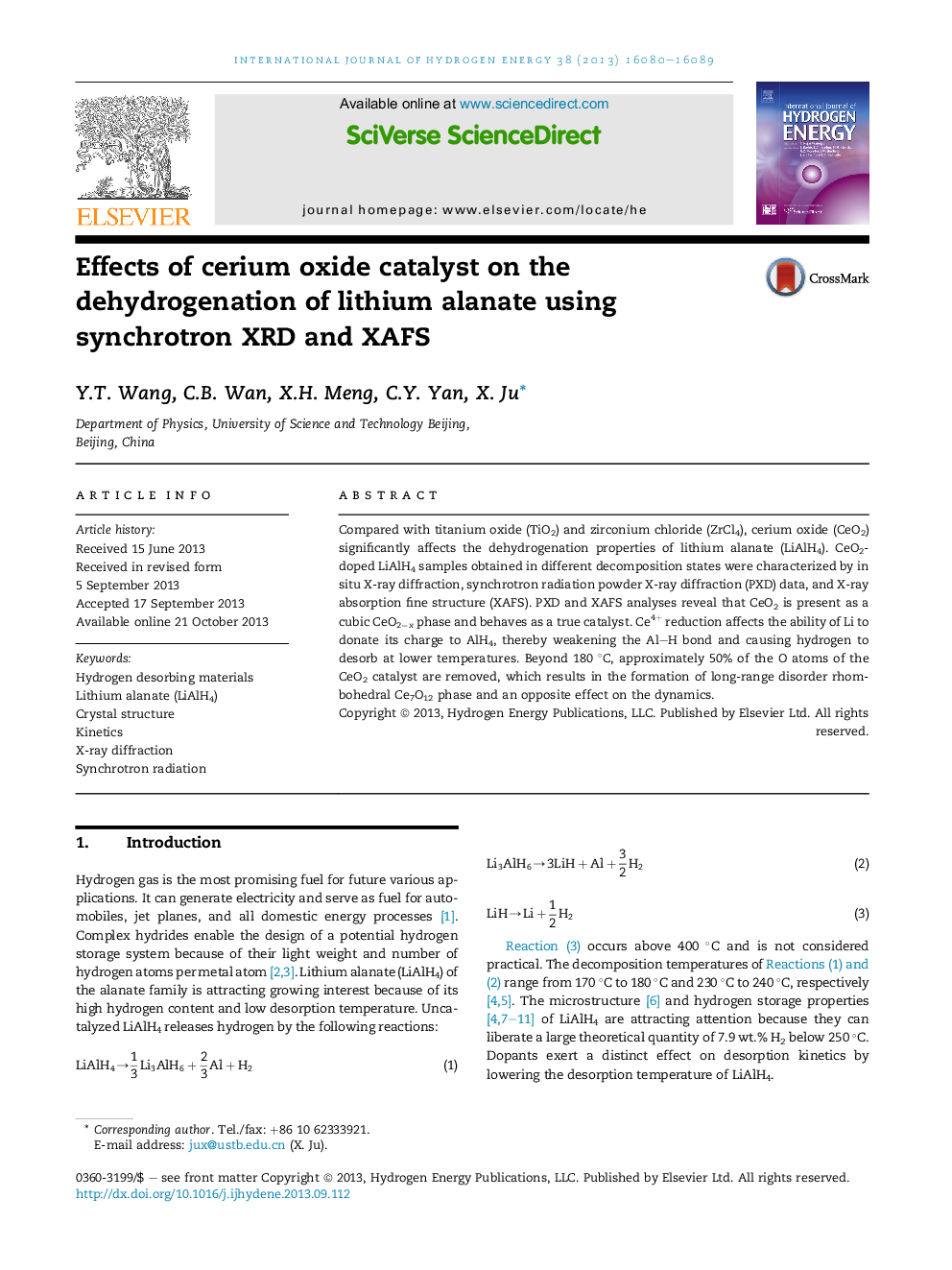| Article ID | Journal | Published Year | Pages | File Type |
|---|---|---|---|---|
| 1274169 | International Journal of Hydrogen Energy | 2013 | 10 Pages |
•CeO2 visibly improved the dehydrogenation properties of lithium alanate.•CeO2 retained the cubic structure at stage I and behaved as a true catalyst below 130 °C.•Ce4+ reduction leaded to lowering of the activation energy and improved kinetics.•Li3AlH6/LiAlH4 oxidation decreased the total hydrogen capacity.•The long-range disordered Ce7O12 phase was formed after heating to 220 °C.
Compared with titanium oxide (TiO2) and zirconium chloride (ZrCl4), cerium oxide (CeO2) significantly affects the dehydrogenation properties of lithium alanate (LiAlH4). CeO2-doped LiAlH4 samples obtained in different decomposition states were characterized by in situ X-ray diffraction, synchrotron radiation powder X-ray diffraction (PXD) data, and X-ray absorption fine structure (XAFS). PXD and XAFS analyses reveal that CeO2 is present as a cubic CeO2−x phase and behaves as a true catalyst. Ce4+ reduction affects the ability of Li to donate its charge to AlH4, thereby weakening the Al–H bond and causing hydrogen to desorb at lower temperatures. Beyond 180 °C, approximately 50% of the O atoms of the CeO2 catalyst are removed, which results in the formation of long-range disorder rhombohedral Ce7O12 phase and an opposite effect on the dynamics.
Graphical abstractPhase variation during dehydrogenation is proposed in Fig. 11. The hydrogen release properties of lithium alanate were improved by the cubic CeO2−x phase after ball milling and heating to 130 °C. When the long-range disordered Ce7O12 phase formed beyond 180 °C, the catalyst activity of CeO2 disappeared.Figure optionsDownload full-size imageDownload as PowerPoint slide
